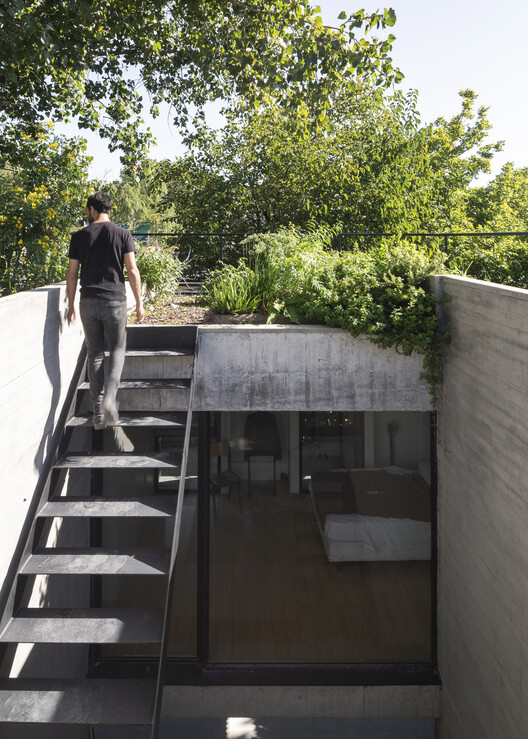
-
Architects: IR arquitectura
- Year: 2020
-
Photographs:Federico Cairoli

Text description provided by the architects. The land in front of the Bajo de San Isidro Ecological Reserve presents unique pre-existing conditions. A swimming pool, a product of being a subdivided portion of a larger lot, several old trees, including an olive tree, and the fact that it is one of the few places where the turtles that inhabit the reserve cross the road to spawn periodically. These factors, added to the lush presence of the reserve itself, provided the opportunity to formulate a project integrated with the surrounding ecosystem in multiple dimensions.



The ATO house was designed to enhance the interaction between the human habitat and the various biological agents, articulating a kind of mutualism. It is organized by cut substrates, which interpret both the client's use requirements and those of the natural context. The first substrate, at ground level, releases the largest possible proportion of it to conserve the land's exchanges and offers semi-covered spaces closely related to the vegetation and the pool.


The second substrate places the domestic functions at the height of the treetops, seeking to improve views and air currents. Lastly, the fully landscaped roof supports autochthonous vegetation and edible species that promote biological exchange powered by birds and insects that transport seeds, extending the limits of the reserve.


The structure was made up of three concrete walls that supported the slab on the first floor. Above it, three inverted beams have front and back corbels from which hangs the metal structure that forms the slab on the ground floor. The three partitions, in turn, order the space, forming four defined use areas on all floors. A sanitary core, a vertical circulatory void, and two deeper hemispheres on the sides parallel to the street. The built volume is removed from the lateral limits of the land one meter, becoming independent from its neighbors and allowing continuous air circulation.



On each floor, the sanitary support is adapted to the requirement of using the functional substrate to which it corresponds; however, its layout to the intramural concrete partitions was built with light materials to allow its reconfiguration if required. The envelope planes are the other variable that defines the functional spectrum of each floor.


On the ground, a floor, a ceiling (undefined enough), and the absence of columns on the perimeter dilute the limits and offer a minimal difference in comfort compared to the rest of the substrate. The first floor repeats the strategy in its horizontal planes but has vertical enclosures adapted to each face's sunlight and visual orientation. Finally, the roof speculates with the sky and the surrounding vegetation as an envelope to enhance the visual relationships above the treetops.


The thermodynamic efficiency of the house is determined by a series of passive solutions, added to a high degree of technology in the use of renewable resources. The front enclosure is made up of high-performance carpentry, flowerbeds and robotic blinds organized in a thickness that offers multiple variables to achieve efficient environmental mediation; a geothermal system allows taking advantage of the average temperature of the groundwater to heat the different environments both in summer and winter; and a battery of photovoltaic collectors reduce electricity consumption from the network. All these systems, plus lighting, security devices and irrigation are centralized by home automation to enhance performance and degrees of comfort.

























































